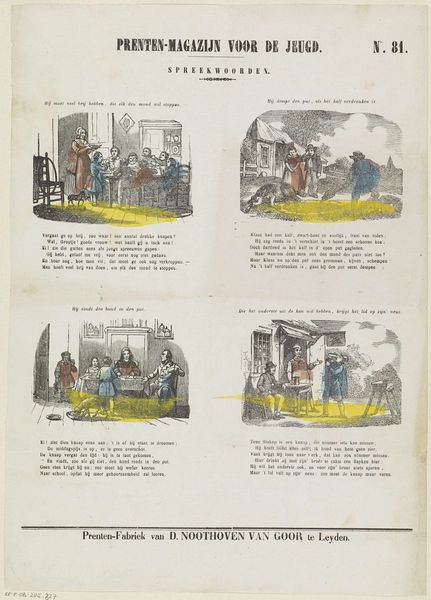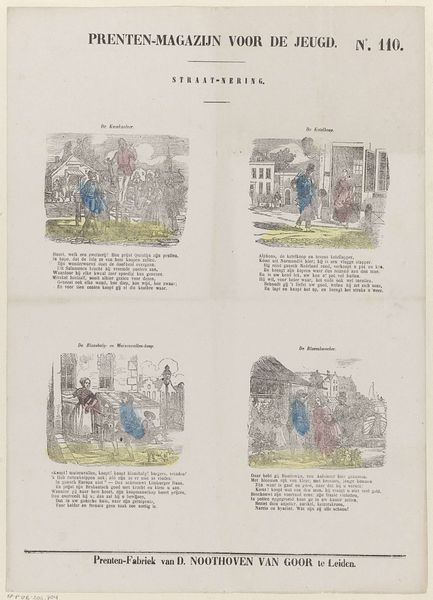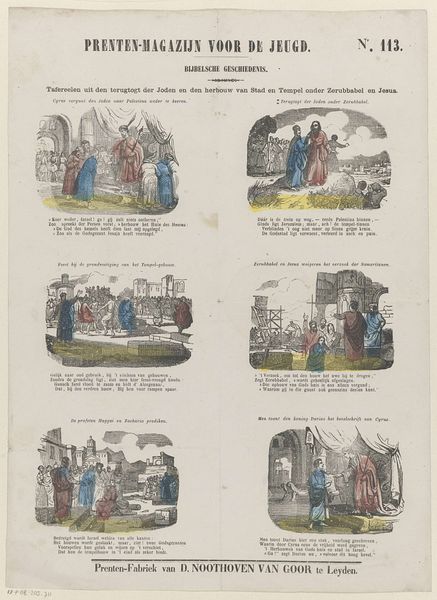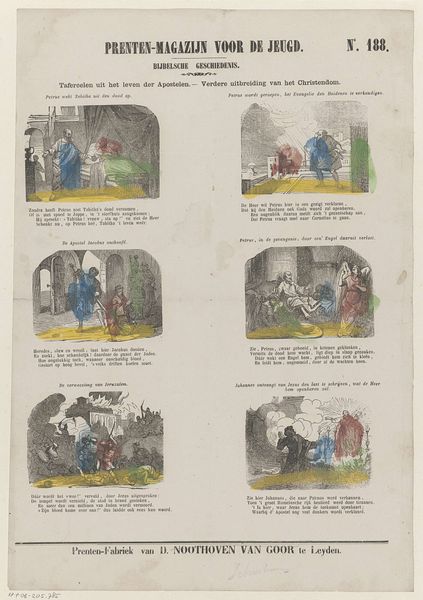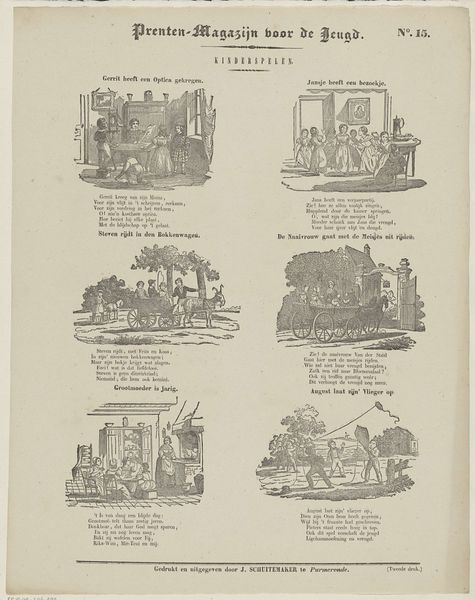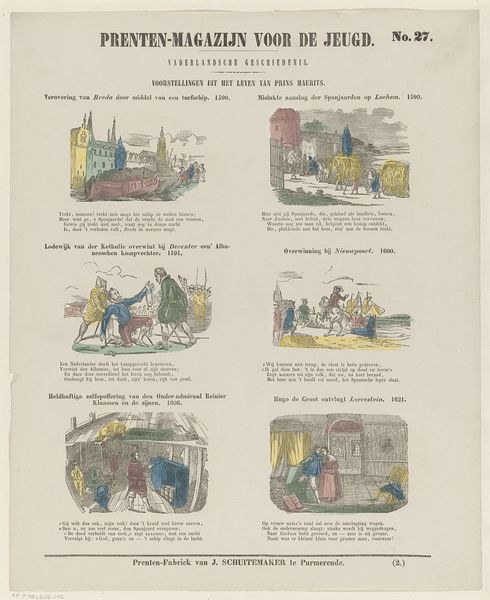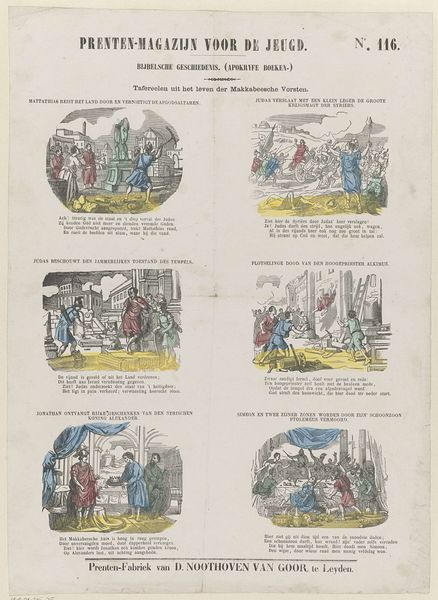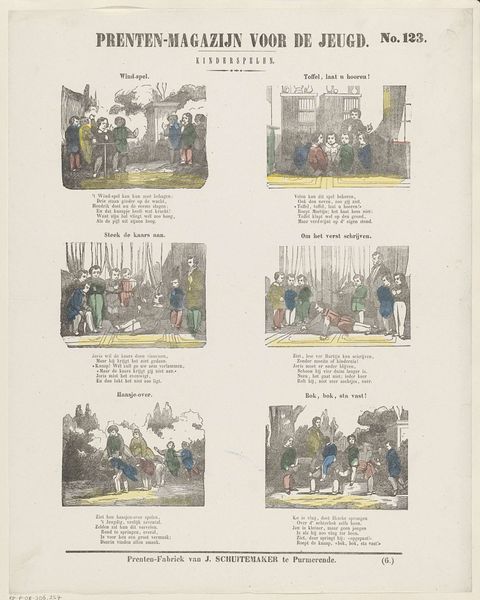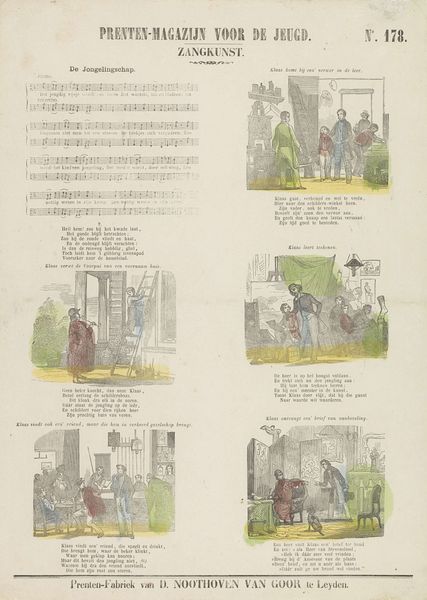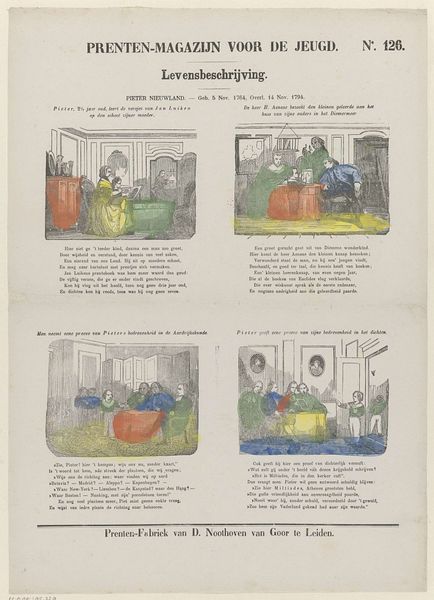
Dimensions: height 417 mm, width 305 mm
Copyright: Rijks Museum: Open Domain
Curator: Let’s discuss this lithograph from between 1850 and 1881, titled "Kinderspelen," by Dirk Noothoven van Goor. Editor: This print showing children at play has a charming, innocent feel, like a snapshot of a simpler time. The scenes are almost like vignettes. How do you interpret this work, especially given its historical context? Curator: This work, made to be disseminated in print, offers insights into 19th-century views on childhood and its role in society. Note how each scene presents a controlled, domestic sphere for children. Consider, what political or societal statements were being conveyed through images such as this? Editor: Well, seeing the image described as Romantic, it contrasts sharply with the reality of working-class children at the time. Perhaps it shows the aspirations of the emerging middle class? A yearning for an ideal childhood? Curator: Precisely. These prints often served to instruct as much as entertain. By depicting idyllic scenes of play and domesticity, they reinforced certain values and norms within a rapidly changing society, almost attempting to preserve innocence amidst industrialization. This can lead us to examine institutions. Who was the intended audience? What role do you think this piece may have played within education? Editor: Perhaps children in wealthy households who were actually given leisure time and proper education. Curator: That’s insightful. And, how did the availability and price point affect viewership? Editor: That brings it all into a new light for me. It's more than just a charming image; it's a reflection of social values and perhaps a desire to shape them. Curator: Exactly. Analyzing the social function of such images allows us a broader understanding of the 19th century's visual culture. It gives great consideration to public roles in the arts.
Comments
No comments
Be the first to comment and join the conversation on the ultimate creative platform.
